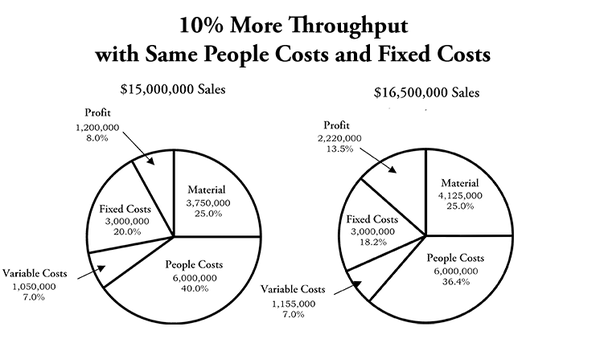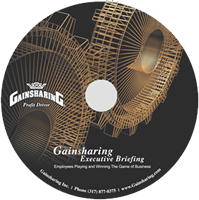Click on the image below to start the video.
Inflation Relief
Inflation is raging.
Your company needs better productivity to offset increased costs.
Your employees need more money to cover expenses.
OK . . . That’s obvious.
But How Is This Done?
There are two essential parts:
(1) Self-Interest – Employees will work to get what they want.
They want to make more money, so we need to give them a way to earn more money (bonus).
This avoids fixed raises. Giving raises to retain your best employees just increases your fixed people costs.
Raises also reward employees, and increase their pay, for doing the same work they’re doing now. So company costs go up when it’s hard to pass along price increases to customers.
In contrast, performance pay (a bonus) is triggered by results and is a win-win.
(2) Employees Need to Know What To Do
It’s not enough to want more money, they need to know what to do to get it.
Specifically what to do. This is where many companies struggle.
- What specific actions do they need to take?
- What numbers/outcomes do they need to hit?
- How will they see/track their progress?
If employees see a way to get what they want, they’ll take action.
There’s a bit more to it than this. But these are the fundamentals.
So Where Does the Bonus Money Come From?
It comes from: (1) labor savings, and (2) leverage on the fixed costs.
(1) Labor Savings
If you have 100 people in your company (for easy math), on any given day, you probably have 4 to 6 people that don’t show up. So your other employees have to make up the work for these people who are absent.
Then you probably have another 4 to 6 people who don’t do much, even when they’re there. So your people are covering for them too. So it’s quite possible to achieve a 10% productivity improvement.
If your company had 100 employees, it’s quite plausible. Your total people cost for the year might be $6 million. A 10% savings on people costs would be $600,000!
If you told your people you will, “take the pay that we would give these other people and give some of it to you as a bonus.” Do you think your people would step up and make the performance happen?
Not going after the bonus would be like walking away from someone offering them cash.
(2) Leverage on Fixed Costs
This method works best for everyone, both the company and employees.
Driving greater throughput with your existing employees reduces the fixed costs as a percentage (equipment, real estate, taxes, business insurance, etc.). So this drives gains.
Since you have employees who are regularly working a certain number of hours, if these employees drive and support higher throughput, this lowers labor cost as a percentage too.
For example . . .
The circle on the right shows the gains from increasing throughput by 10% with the same people costs and fixed costs.
Material and variable costs increase, but fixed costs remain fixed. So the fixed costs are smaller as a percentage of the increased throughput/sales.
This leads to profits increasing from 8% to 13.5%!
That’s a profit increase of $1,020,000!
Part of this profit increase could be paid as bonuses, and the cycle repeated.
In actual practice, the gains usually come from a little bit of both. That is, some labor savings and some increases in overall production/sales.
Other Companies Prove This Works
Many companies have proven the effectiveness of using Gainsharing to give employees “skin in the game” and make it clear what to do to earn a bonus.
Productivity improvements of 5 to 15% are quite common in the first year for my clients.
But to give you an outside sample of performance improvements, Eldridge Puckett conducted a study of productivity increases achieved in the two years after implementing gainsharing at ten companies. The number of employees in the plants ranged from 30 in one plant to 1,200 in the largest.
Productivity improvements in the first year ranged from 6.8% to 38.7%, with an average improvement of 22.5%. In the second year, productivity improvements ranged from 10.9% to 49.4%, with an average improvement of 23.7%. Over the two years, productivity improvements ranged from 10.3% to 39.2%, with an average productivity improvement of 23.1%.
If they can do it . . . so can you.
Would You Like to See Your
Bonus Options?
With some basic information, I can use a simulation program to put together an example of the bonuses your company could pay, and the profit improvements.
To have the results emailed to you, click on the below.
If it’s working for others, and would work for you . . . it’s worth checking out – Right?




